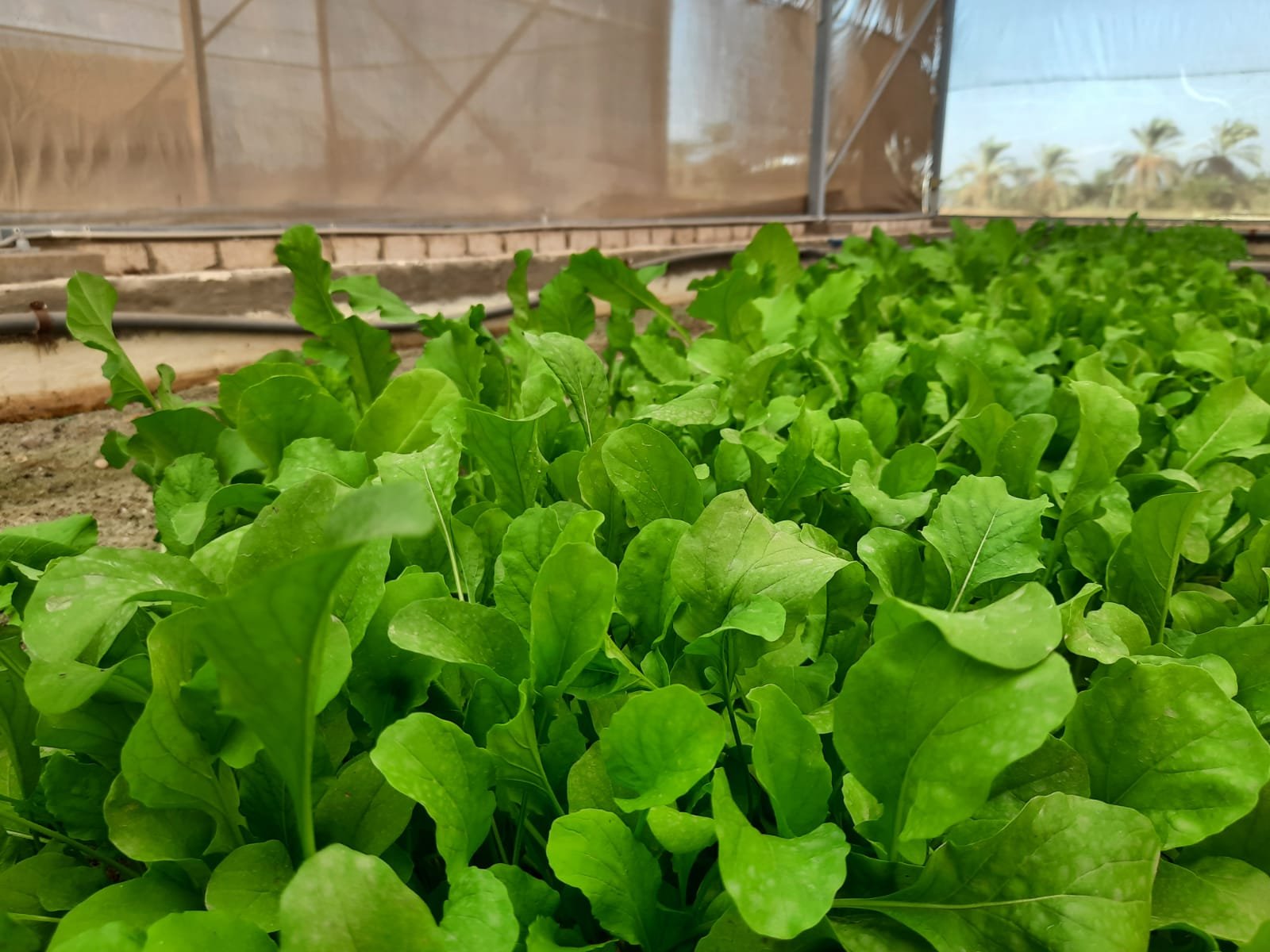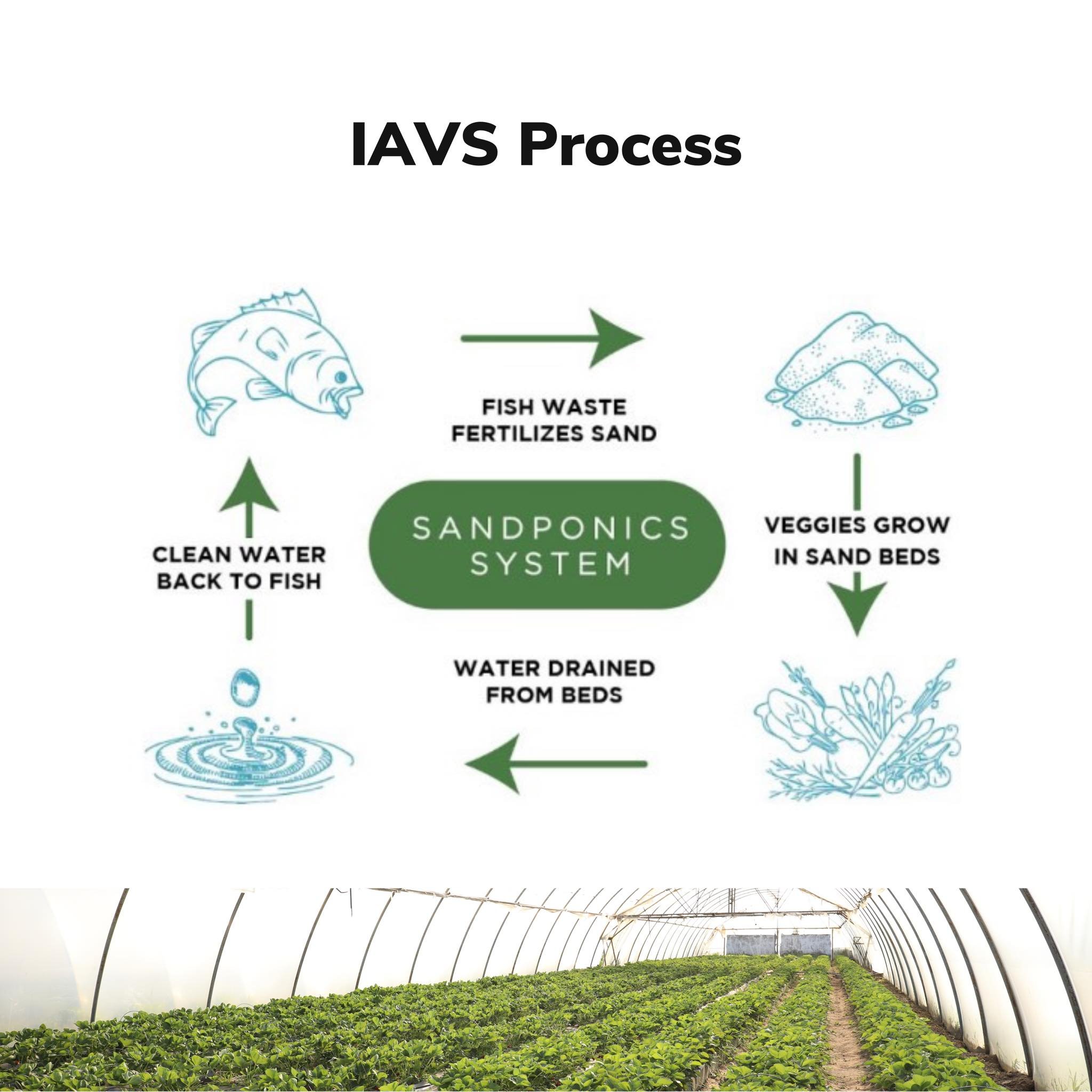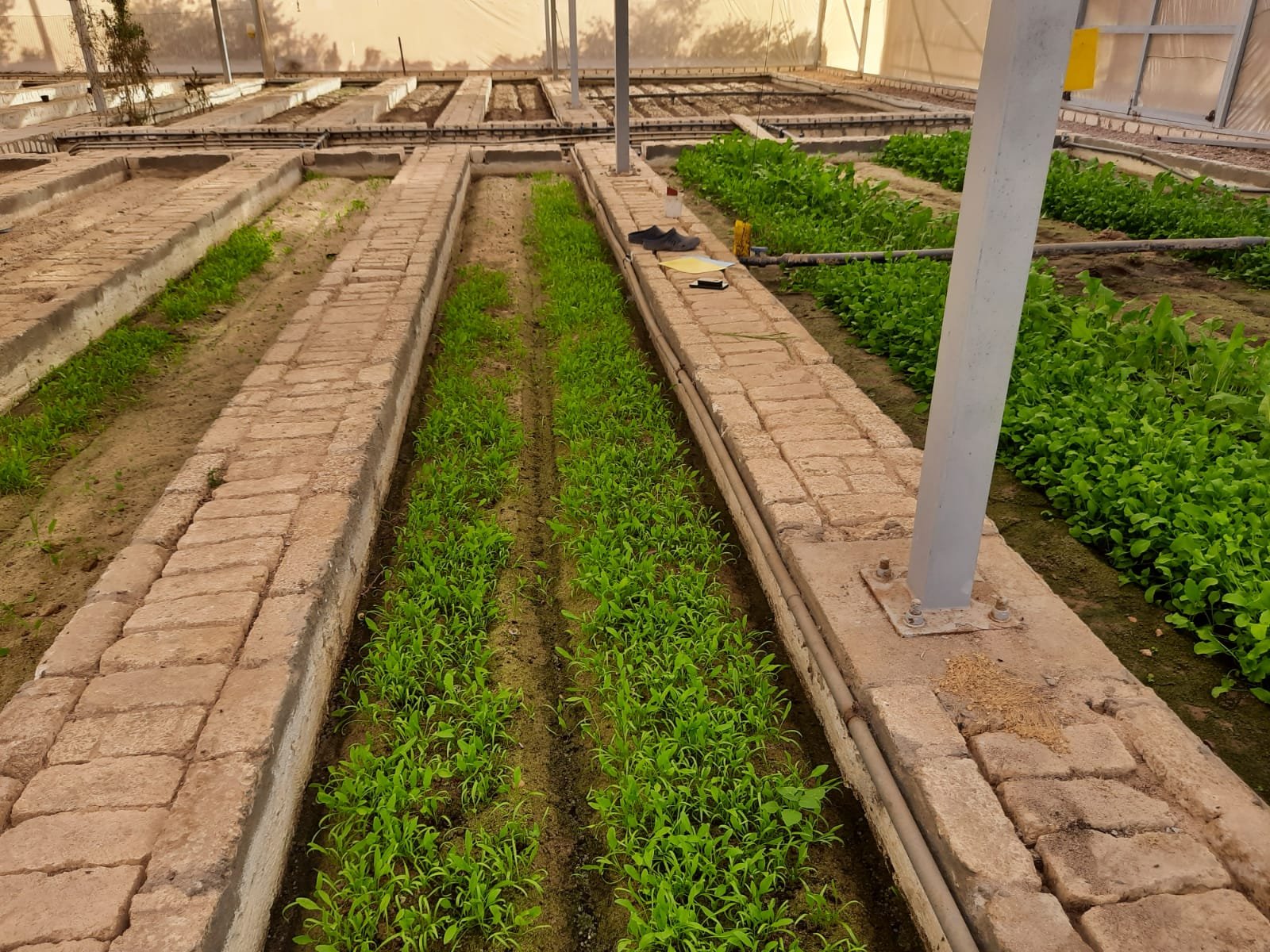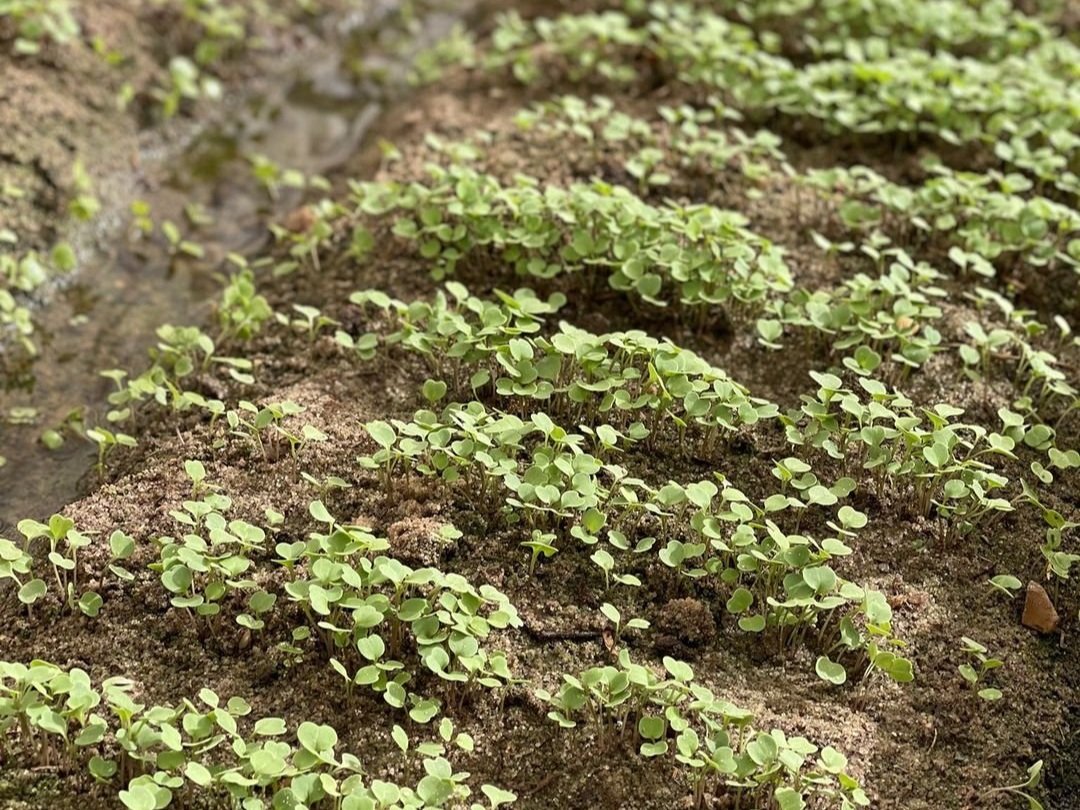Apr 19, 2023
iAVS: A Sustainable Solution to Desert Food Security

Kiwa Farms. Credit: Henry Gordon Smith
Written by: Niko Simos and Henry Gordon-Smith
April 19, 2023
Desert regions are known for their extreme temperatures, lack of water, and arid soils, making it almost impossible to grow crops. However, with the increasing global population and the need to meet food demand, finding ways to grow crops in arid regions has become a pressing concern.

Credit: Kiwa Farms.
The Integrated AquaVegeculture System is an approach to agriculture that could provide a solution to food insecurity in desert regions. It is a growing technique for farming fish and cultivating plants in a symbiotic ecosystem utilizing sand as the primary medium for mechanical filtration, biofilter, and crop-growing media. It is a promising, sustainable production option for several crops, including vegetables, vines, and fruits.
The system can easily be applied since sand is readily available in most areas and is a versatile medium that can be sterilized and recycled. It’s also cheaper than soil, thus making it a more efficient, affordable, and low-risk technology option.
One of the benefits of iAVs is that it does not require specialized training. By utilizing all of the fish ‘waste’, iAVs does not have the same crop nutritional deficiencies that are common in traditional aquaponic systems and it does not require additional supplements.
This blog post will explain how iAVS works, its key considerations, and how it can help desert populations with food security.
How iAVS Works
iAVS combines aquaculture, which is the technique of growing fish, and horticulture, which is the technique of growing plants. It uses fish to create ammonia that then gets converted to nitrates by beneficial bacteria, which serves as food for the plants. The main difference when compared to aquaponics is that it does not require separate mechanical and biofilters as the sand acts as both.


Credit: Kiwa Farms.
Sand is an ideal growing medium because it provides physical support for the plants while allowing for good drainage, air circulation, and root growth. It also has a high water-holding capacity, which means that it can hold onto water for extended periods, reducing the amount of water required for plant growth.
The water solution used in iAVS comprises the minerals and nutrients that plants require for growth. The solution is circulated through the sand, delivering nutrients directly to the plant's roots, resulting in plants growing faster and healthier when compared to those grown in traditional soil.
“When soluble and insoluble fish waste is deposited on the sand, the enormous counts and diverse types of bacteria transform this rich waste to all plant nutrients required. Therefore as long as fish are healthy and well fed, no external fertilizer is required.” - Omar Badran, Founder and CEO at Kiwa.
Key Considerations for iAVS
There are several key considerations when it comes to iAVS.
The first consideration is the type of sand used. Not all sand is suitable for growing plants, and it's important to use sand that is free
from toxins and heavy metals. Ideally, the sand should be coarse and have no clay, silt or fine sand, to ensure good drainage.
The second consideration is balancing the system to provide the correct amount of nutrients for plant growth. It is recommended to start with 80-100 fingerlings in a 1000L fish tank, matched with a sand biofilter with a volume of 2000L. It is recommended to have a balance of 50% fruiting plants and 50% vegetables to avoid any nutrient deficiencies or toxicities. It is also recommended that the plants be at different stages of growth.
Additional considerations for growing plants are lighting conditions and temperature. The amount of light a plant receives is crucial for its growth, and in areas with limited natural light, artificial lighting may be necessary. In contrast, desert regions with abundant sunlight can utilize natural light. Temperature control is also critical for plant growth, and cooling systems may be required in hot desert regions to maintain optimal temperatures.
How iAVS can help Desert Populations with Food Security

Credit: Kiwa Farms.
iAVS has the potential to revolutionize agriculture in desert regions and provide a sustainable solution to food insecurity.
Here are some ways in which iAVS can help desert populations with food security.
1. Requires less water. iAVS requires significantly less water than traditional soil-based agriculture.
2. Can be used anywhere. iAVS can be used anywhere,
regardless of the quality of the soil. This means that it can be
used in areas where traditional agriculture is not possible, such
as desert regions, making it an ideal solution for providing food
security in areas that are prone to droughts and other extreme
weather conditions.
3. Provides year-round food production. iAVS can provide
year-round food production, regardless of the weather conditions. This is because iAVS can be grown indoors, allowing for temperature and lighting control. This means that crops can be grown throughout the year, providing a consistent food source for desert populations.
4. Reduces food transportation costs. Desert regions often import food from other regions, which can be costly and unsustainable. iAVS can help to reduce food transportation costs by providing a local source of food production. This can also help
to create job opportunities for local communities and stimulate the local economy.
5. Increases food diversity. iAVS can be used to grow a wide range of crops, including fruits, vegetables, and herbs. This can
help to increase food diversity in desert regions, providing a variety of fresh, healthy, and nutritious foods for local populations. For example, Kiwa has cultivated leafy greens, arugula, parsley, spinach, peppermint, lemongrass, tomatoes, cucumber, zucchini, hot pepper, radish, kale and more.
Supporting Research on iAVS
The research papers include;
1. McMurtry, M.R., P.V Nelson and D.C Sanders. Mineral Content and Yield of Bush Bean Cucumber Tomato [et al]
Cultivated in Sand Irrigated with Recirculating Aquaculture Water North Carolina Agricultural Research Service No11019 (1987).
2. McMurtry M.R., D.C Sanders Sept1990 HortScience25(9) Performance of an Integrated Aquaculture-Olericulture System as influenced by component ratio.
3. M.R McMurtry D.C Sanders R.G Hodson B.C Haning. Food Value Water Use Efficiency Economic Productivity Integrated Aquaculture-Olericulture System Component Ratio (1990).
4. McMurtry M.R R.G Hodson D.C Sanders. Water Quality Maintenance Mineral Assimilation Plants Influence Growth Hybrid Tilapia Culture Vegetable Crops Trans Amer Fishcries Soc (submitted) (1990).
5. McMurtry, M.R., P.V. Nelson, D.C. Sanders and L. Hodges. 1990a. Sand culture of vegetables using recirculating aquacultural effluents. J. of Applied Agricultural Research; Vol. 5, No. 4, pp. 280-284.
6. McMurtry, M.R., D.C Sanders, P.V Nelson and R.G Hodson., Nutrient dynamics in an integrated recirculatory aquaculture-vegetable production system: Proc XXIIIrd International Horticultural Congress Florence Italy Aug27-Sept1 (1990c).
7. McMurtry, M.R., D.C. Sanders, P.V. Nelson and A. Nash. 1993a. Mineral nutrient concentration and uptake of tomato irrigated with recirculating aquaculture water as influenced by the quantity of fish waste products supplied. J. Plant Nutrition Vol. 16 (3), pp. 407-419.
8. McMurtry, M.R., D.C. Sanders, R.P. Patterson and A. Nash. 1993b. The yield of tomato irrigated with recirculatory aquaculture water. J. Production Agriculture., Vol.6, no. 3, pp. 331-2, 428-432.
9. McMurtry, M.R., D.C. Sanders, B.C. Haning, and P.C St Amand. submitted in 1990 and again in 1994: Food Value, Water Use Efficiency, and Economic Productivity of an Integrated Aquaculture-Olericulture System as Influenced by Tank to Biofilter Ratio (HortTech; submitted twice but not published).
10. McMurtry, M.R., D.C. Sanders, J. Cure, R.G. Hodson, B.C. Haning and P.C. St. Amand. 1997a. The efficiency of Water Use of an Integrated Fish/Vegetable Co-Culture System. J. World Aquaculture Society. 28 (4).
11. McMurtry, M.R., R.G. Hodson, D.C. Sanders and J. Cure. 1997b. Effects of Biofilter / Rearing Tank Volume Ratios on Productivity of a Recirculating Fish/Vegetable Co-Culture System. J. of Applied Aquaculture. 7(4): 33-51. Partial funding for this research was from the USDA Special Grant P.L. 89-106: “Agricultural Adjustment in Southeast Through Alternative Cropping Systems.”
No scientific investigation is done in isolation, and iAVs was fortunate in that its investigative team and the advisory body consisted of people who were at the top of their professional careers including 10 that have been awarded as ‘fellows’ in their fields. The members of the iAVS research group include Merle Jensen, expert in sand horticulture and designer of the Land Pavillion at Epcot in Disneyland, as well as Paul V. Nelson, who’s book ‘Greenhouse Management and Operations’ is recognized and used around the world as an educational resource. Both Merle and Paul provided on-going support and assistance, Paul
V. Nelson donated the use of his personal greenhouse for the iAVS research.
Conclusion

Credit: Kiwa Farms.
iAVS is an approach to desert agriculture that has the potential to provide a sustainable solution to food insecurity. By using sand as a growing medium and recirculating the water form the fish tank into the sand biofilters, iAVS requires less water than traditional soil-based agriculture, can be grown anywhere, provides year-round food production, reduces food transportation costs, and increases food diversity. iAVS could provide a vital solution to food insecurity in desert regions, helping to ensure that everyone has access to fresh, healthy,
and nutritious foods.
As desert regions continue to face challenges related to food security, it's important to explore innovative solutions like iAVS to address thesechallenges and create a more sustainable future for all.
